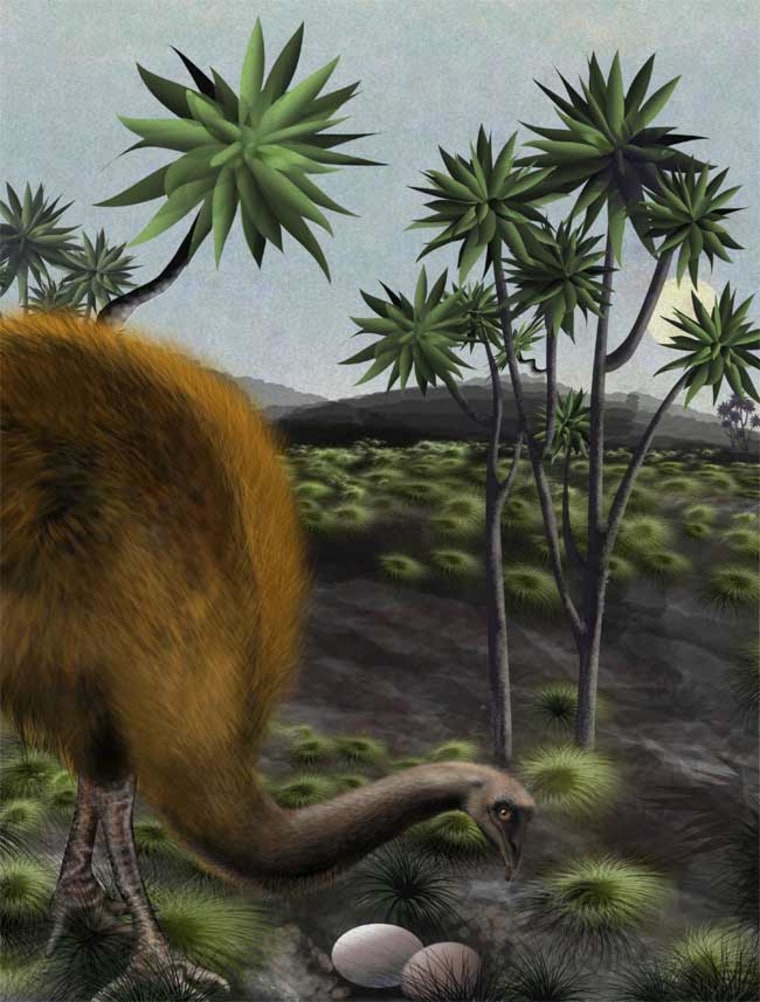Giant extinct flightless birds apparently had the most fragile bird eggs discovered yet.
The eggs in question belonged to New Zealand moas, extinct cousins to ostriches and emus. The 10 known species of these flightless birds were quite diverse in size, ranging from turkey-size moas to giants more than 8 feet tall. All moa species died off soon after the Maori settled in New Zealand late in the 13th century.
Despite more than a century of scientific investigations of moas, many questions remain. For instance, much remained uncertain about their eggs — just 36 whole moa eggs are known, and of these scientists can only match three with their species.
To discover which species that other moa eggs might belong to, researchers first analyzed DNA from remains of different species of moa left all over New Zealand. Comparing the animal DNA with that from eggshells, they identified the eggs of seven of the 10 currently recognized moa species — for instance, olive green moa eggshells belonged to the South Island's upland moa Megalapteryx didinus.
Surprisingly, eggshells identified by DNA as belonging to the two largest, heaviest moa species, Dinornis robustus and Dinornis novaezealandiae, were thinner than expected, at just 1.41 millimeters (less than the length of a flea) and 1.06 millimeters (about the diameter of a pinhead) thick, respectively. These eggshells seemed especially thin for birds whose females could weigh as much as 550 pounds.
Of course, the lighter, roughly 165-pound males might have nested on the eggs instead of the females, as is common in the moa's living cousins. Indeed, when the researchers tested the outer surfaces of the eggshells, they found them covered in male DNA. Still, even if assumed that the lighter males incubated the eggs, the researchers calculated that given the thinness of the shells, Dinornis eggs would have proven far more susceptible to breakage than any of the 3,434 bird species (both living and extinct) measured to date for eggshell strength.
It's possible the eggs of these giants were incubated in nests specifically built to support the weight of the birds atop them. However, what little evidence there is of what moa nests were like suggests they were not built in any special way. Instead, they may have been very similar to those of ostriches and emus, "consisting of just a scrape in the ground surrounded by a very thin layer of twigs and leaves," said researcher David Lambert, an evolutionary biologist at Griffith University in Australia.
The new findings suggest these extinct giants might have practiced some unusual, perhaps unique and as yet unknown nesting behavior to keep from crushing their offspring. "The incubating adult may have curled around the eggs, rather than sitting directly on top of them," Lambert told LiveScience.
The scientists detailed their findings online Aug. 30 in the Proceedings of the National Academy of Sciences.
